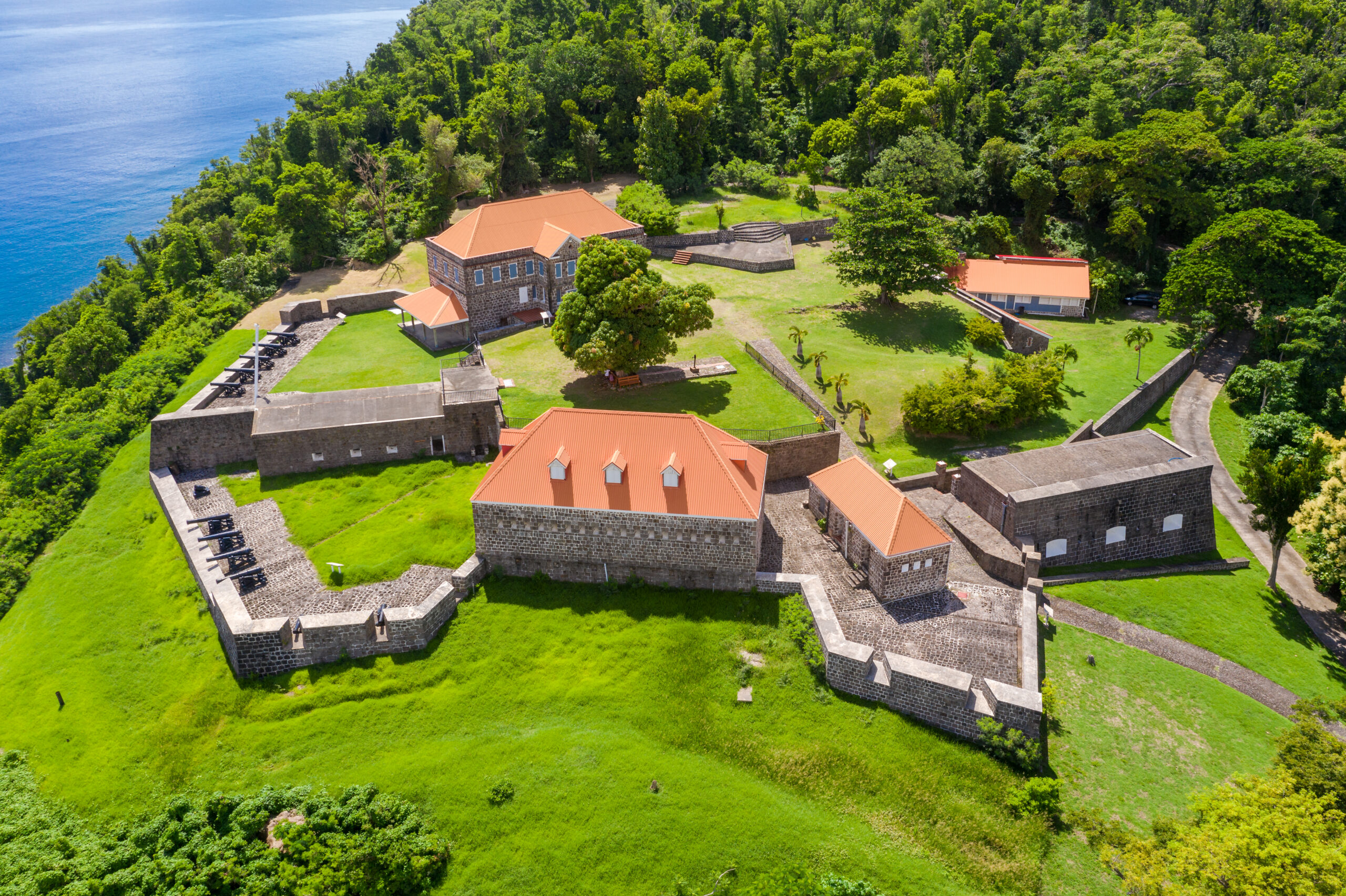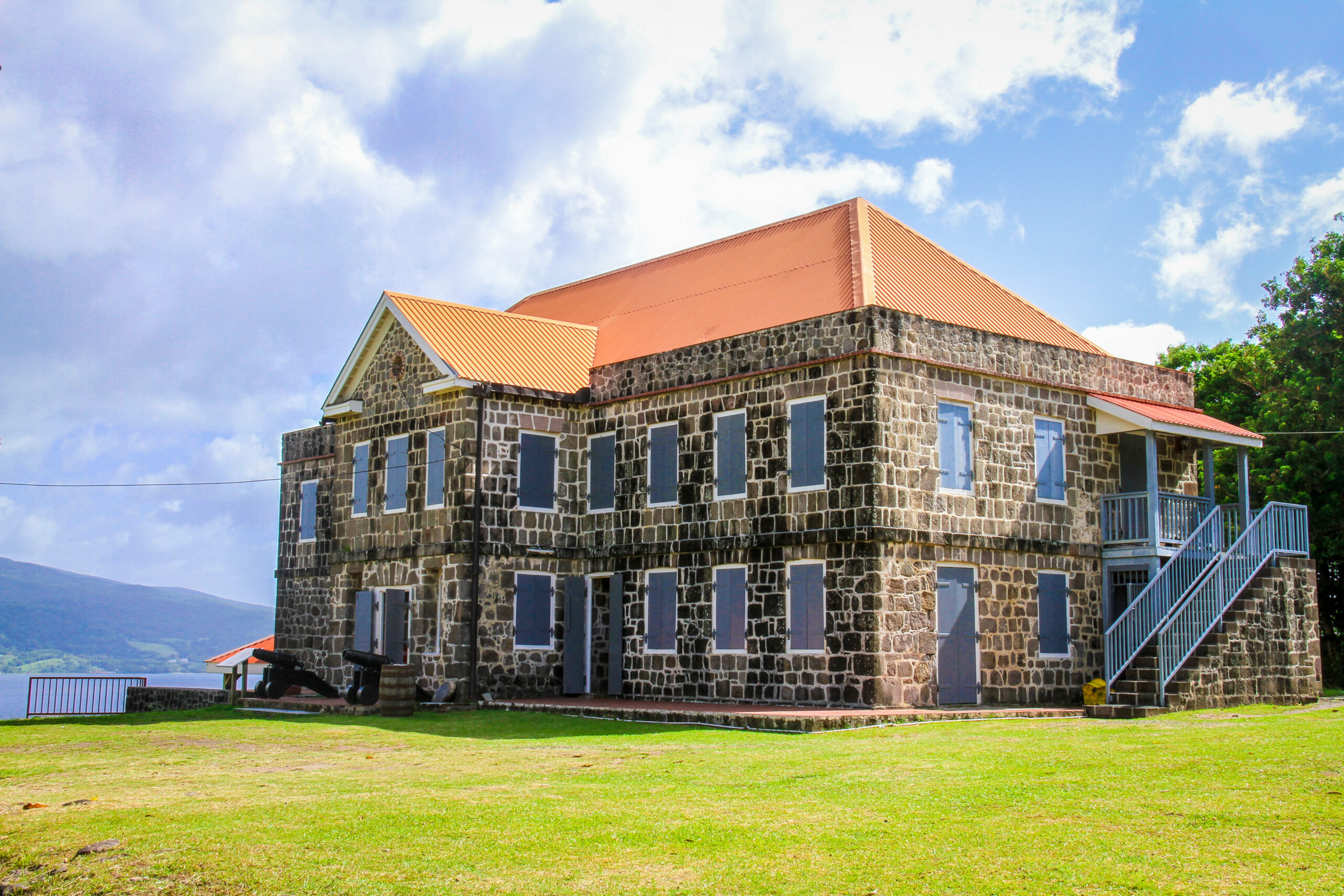
Cabrits National Park
Description
Cabrits National Park is located in the northwest of Dominica. The name Cabrits originates from a time when sailors let goats (cabrits) free to have meat to eat when they returned to the island.
The Park is formed by a peninsula that protrudes from the coast of the city of Portsmouth and occupies a small area of 5.30 km².
Designated in 1986, the Park has a dual objective, to protect the biodiversity of this little piece of island but also to promote the important history of an old English garrison known as Fort Shirley.
Fort Shirley, built in 1765 by the British, was a military post to defend and protect the island of Dominica. It was enlarged between 1778 and 1784 by the French, during their occupation.
The fort comprises two structures that served primarily as barracks, warehouses, and places of subsistence. These structures gave way to two walls protected by cannons. Each of these walls situated high on the hill overlooking the canal below, allowed a direct line of sight to see approaching danger.
Fort Shirley was finally abandoned in 1854, the surrounding area well wooded and quickly recreating the tropical paradise that the fort encompassed.
The peninsula itself, made up of two hills called ‘West and East Cabrits’, which culminate at 140 m and 171 m above sea level, respectively, was formed by the same volcano (Morne aux Diables) about 1 million years ago. Originally they were separated from the main island, but under the action of the tides and marine currents, an isthmus of sand and coral was formed.
These alluvial deposits have formed a wetland whose fresh and brackish waters flow into Prince Rupert Bay. The park protects a 421 ha marine area, located between Prince Rupert Bay and Toucar Bay.
Biodiversity
The Cabrit National Trail includes the peninsula where wetlands, drylands, coral reefs and tropical forest coexist.
There are generally two types of vegetation. In the mountains, where there is little rainfall, dry scrub forest dominates and is home to a strong community of deciduous species (which lose their leaves during the dry season – Lent). The marsh and fen wetland covers 35 ha and is one of the two largest in Portsmouth. Its vegetation is made up of many trees, including three emblematic ones: the pond apple (Annona glabra), the dragonsblood tree (Pterocarpus officinalis) and the white mangrove (Laguncularia racemosa).
These two interacting areas represent a true reservoir of biodiversity.
The coastal strip is populated mainly by coconut (Cocos nucifera), manchineel tree (Hippomane mancinella), somlatha (Ephedra distachya), portia tree (Thespesia populnea), almond tree (Prunus dulcis), ficus and also the Sloanea caribaea specie.
On the other hand, between 1960 and 1970, a small forest plantation was established. It is easily recognized by the linearity in the organization of the plants of hibiscus (Hibiscus sp.),
mahogany or Honduras mahogany or or big-leaf mahogany (Swietenia macrophylla), teak (Tectona grandis), Cuban mahogany or small-leaved mahogany (Swietenia mahagoni), caribbean pine (Pinus caribaea) and rosy trumpet tree (Tabebuia rosea).La frange côtière
In general terms, 40 species of trees have been identified, but also more than 30 herbs and shrubs that are also recognized in local medicine and/or used for Dominican crafts.
Regarding fauna, the park is home to two species of amphibians, 162 species of birds, eighteen species of mammals (including five introduced species), twenty species of crabs and at least two species of scorpions.
Ecotourism Potential
Le Cabrits national Park est un site à visiter, sa riche biodiversité et sa formation remarquable (volcan et courant marin) en sont deux bonnes raisons. Pour y accéder, un sentier a été aménagé, il part du Fort et permet d’accéder aux sommets de West et Est Cabrits en une heure.
Le parc est également le dernier arrêt du sentier Waitukubuli qui prend naissance dans le village de Scott’s Head. Ce dernier segment va de Capuchin au Parc National Cabrits long de 10km il s’effectue en 4 heures.
Enfin, les eaux côtières calmes et bleues bordant le Parc sont idéales pour la plongée sous-marine.


